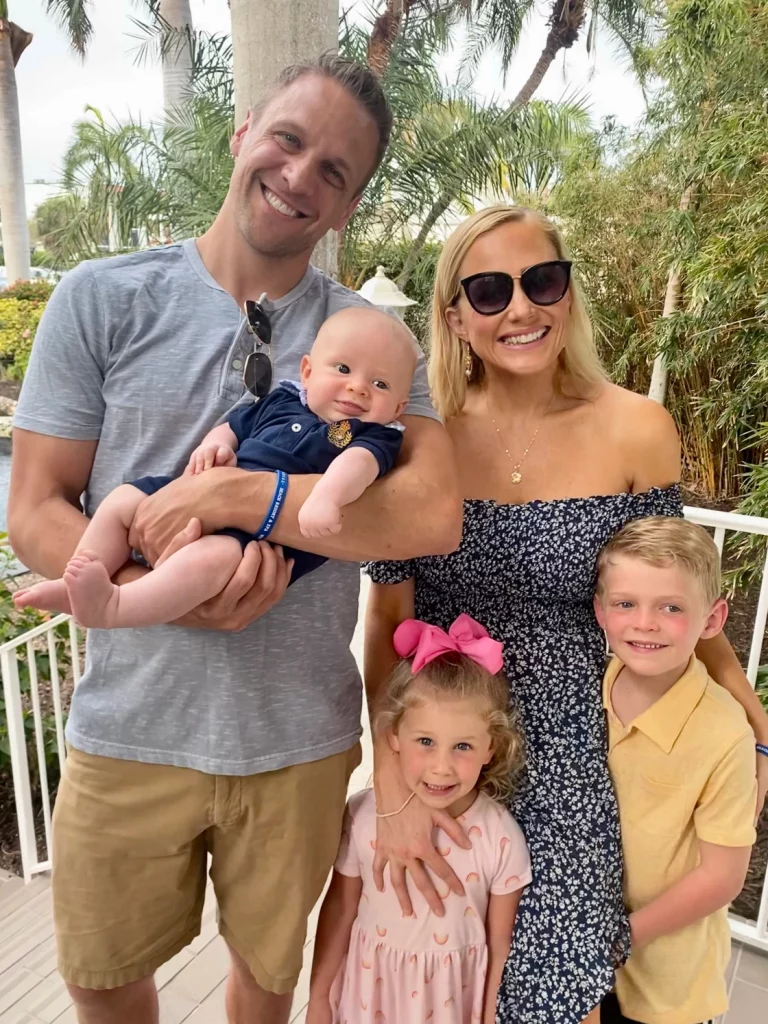Those of us who are young, fit, and healthy don’t tend to think too much about getting cancer. After all, we’ve been taught that if we live a healthy lifestyle our chances of developing the disease are quite low. Unfortunately, no matter how healthy you are, those chances are not zero. This 39-year-old extremely healthy father of three had the shock of his life when his sudden headaches turned out to be glioblastoma, a type of aggressive brain cancer. Now, he is in the battle of his life.
Young, Healthy Dad Diagnosed With Glioblastoma
Before his cancer diagnosis, Ryan Russell described himself as a super healthy, athletic, and energetic father of three young children. His life, until that point, had been quite successful. At 39 years old, he had a beautiful wife and family and a successful career. Things couldn’t be going any better – until the headaches began.
The headaches started in April. They nearly always came on just as he was leaving the gym, after dropping his son off at school. Calling them headaches is an understatement, really. Severe migraines is a much more fitting description.
“About 20 minutes after leaving the gym, I would just start to get an incredible amount of pressure in my head. It would lead to these headaches and it would cause some vision issues — tunnel vision, things like that, which was just really odd,” he described. (1)

As always, getting diagnosed took some time. He saw three different doctors before they figured it out. The first thought was maybe an inner ear problem or something related to COVID. The second wanted to take a holistic approach to stop the migraines. It was the third doctor who finally suggested that Russell have an MRI scan done.
Glioblastoma Diagnosis
Normally you have to wait a couple of days to have the results from an MRI scan. In Russell’s case, however, by the time they pulled him out of the MRI machine, there was a radiation oncologist already there waiting to speak with him. The oncologist revealed that there were three lesions on Russell’s brain. They immediately sent him to another hospital to figure out what they needed to do next.
Things moved very quickly. In Early May, Russell went in for a craniotomy. This is where they take out a piece of your skull to access the brain. The doctors removed one of the tumors they knew would have little impact on his brain’s functioning – things like speech, emotion, and motor skills. Finally, they had a diagnosis: Glioblastoma – a very aggressive form of brain cancer.
What Is Glioblastoma?
Glioblastoma is an aggressive form of cancer that can form in the brain or the spinal cord. It forms from cells called astrocytes that support nerve cells. It can occur at any age and often causes headaches, nausea, vomiting, and seizures. Glioblastoma is very difficult to treat because rather than forming tumors that are solid masses, they form tentacle-like ones that go into the brain. (2)
Typical treatments include surgery to remove tumors, radiation, and chemotherapy. These often don’t have a very large impact, however. There are more treatments being developed and various clinical trials happening around the world. Still, the prognosis currently is grim. The National Brain Tumor Society says that the five-year survival rate is less than seven percent.
Read: A man with stage-4 cancer was told he wouldn’t live to see his kids grow up. A rare surgery might give him a chance.
A Personalized Vaccine
Russell, his wife, and his family, however, refuse to give up despite the dark prognosis. Currently, in Germany, there is a personalized vaccine in a trial that targets glioblastoma. To get it, however, he will need to travel to Europe and pay out-of-pocket. It is not available in the United States because clinical trials for the shot have not been done yet in the country.
A vaccine is a form of immunotherapy – a treatment that uses our own immune systems to fight disease. Dr. Douglas Colkitt, a retired radiation oncologist in Sarasota, Florida, who has been consulting in Russell’s case explained that tumors have what he called a “force field” on them that protects them from the body’s immune system. Glioblastomas happen to have one of the strongest force fields of all. The vaccine takes the form of glioblastoma cells plus certain cells in the bloodstream. This creates a personalized vaccine inside the patient’s body to help the immune system conquer the tumors’ force fields and destroy the tumors naturally.
Results from the German trials of the personalized vaccine have been incredibly promising. In these trials, 80% of patients made it to three years past diagnosis. Colkitt says it is providing a real hope for one of the world’s most difficult cancers. He reminds us, however, that the trial was small, with only 30 patients. American trials of similar vaccines haven’t seen the same encouraging results.
A Family With Hope
Still, Russell and his family are hopeful. They plan on traveling to Germany for Russell to have the vaccine in January. Until then, he will continue to live as normally as possible. He has been lucky to stay in pretty good health and continues to work as an associate professor at Penn State University and remain active with his children. He and his wife Samantha have started a blog about their journey battling glioblastoma where they talk about everything from treatments, their day-to-day, and how they are talking to their children about their father’s illness.
Keep Reading: A woman with terminal cancer says taking ‘magic’ mushrooms eased her depression and helped her process a miscarriage she had decades ago
Sources
- “Dad, 39, started having ‘migraines.’ It turned out to be brain cancer.” Today. A. Pawlowski. July 20, 2022.
- “Glioma.” Mayo Clinic.

